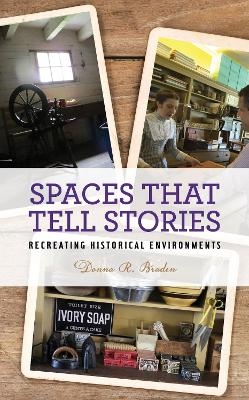
Spaces that Tell Stories
Rowman & Littlefield (Verlag)
978-1-5381-1103-1 (ISBN)
Historical environments delight visitors because of their ability to make them feel transported to another time and place. These environments, found in both museum exhibitions and historic structures, are usually rich with objects that hint at deeper stories and context. But these spaces often lack rigor in terms of historical and interpretive methodology, along with a thoughtful and purposeful integration of storytelling principles. Spaces That Tell Stories: Creating Historical Environments offers a fresh look at historical environments, providing a roadmap for applying this rigor and integrating these principles into the creation of such environments.
It begins by delving into the power of these environments for museum visitors, drawing upon multiple cross-disciplinary fields. An in-depth how-to methodology follows, which begins with the steps of framing the project by aligning it with institutional goals, defining audiences, involving visitor studies, and inviting community engagement. It continues through the steps of researching, creating, interpreting, refining, and evaluating the impact of the environment. The author’s methodology is applicable to environments in both historic structures and museum exhibits from different eras, places, and topics. It is also scalable to museums’ varying sizes and budgets. To give a sense of how the methodology laid out in this book translates into real-world practice, detailed case studies appear throughout, along with practical tips, checklists, charts, descriptive photographs, and source lists. An extensive bibliography follows.
Spaces That Tell Stories: Creating Historical Environments is a unique contribution to the museum field. It is a must-read for museum professionals installing or upgrading historic environments, while the methodology and case studies also offer practical strategies for other museum professionals working with collections, exhibitions, and interpretation (and how these are integrated), thoughtful insights into museum practice for students, and a helpful toolkit for local historians.
Donna R. Braden, Senior Curator and Curator of Public Life at The Henry Ford in Dearborn, Michigan, has spent more than four decades in the museum field. Both at The Henry Ford and as an independent consultant, her career has cut across numerous aspects of museum practice, including material culture expertise, collections development and analysis, historical research, interpretive planning, exhibition development, and visitor studies. Her creation of rigorously researched, story-based environments in both museum exhibitions and historic structures stands out as a benchmark of the integration between these disciplines.
Chapter 1. The Power of Immersion in Historical Environments
Chapter 2. Pioneering Contributions to Historical Environments
Chapter 3. Framing Your Project
Chapter 4. Your Research Methodology
Chapter 5. Bringing Your Environment to Life
Chapter 6. At Last! Creating Your Environment
Chapter 7. A Sampling of Historical Environments
| Erscheinungsdatum | 28.06.2019 |
|---|---|
| Reihe/Serie | American Association for State and Local History |
| Verlagsort | Lanham, MD |
| Sprache | englisch |
| Maße | 156 x 231 mm |
| Gewicht | 345 g |
| Themenwelt | Kunst / Musik / Theater |
| Geisteswissenschaften ► Geschichte ► Hilfswissenschaften | |
| Wirtschaft ► Betriebswirtschaft / Management | |
| ISBN-10 | 1-5381-1103-9 / 1538111039 |
| ISBN-13 | 978-1-5381-1103-1 / 9781538111031 |
| Zustand | Neuware |
| Haben Sie eine Frage zum Produkt? |
aus dem Bereich


